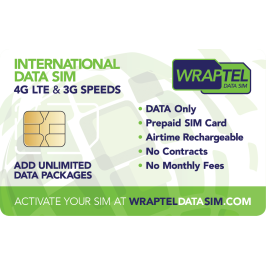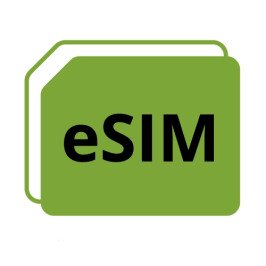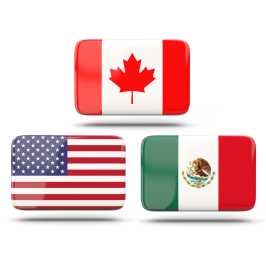Travelers today rely heavily on connectivity to navigate, communicate, and stay informed. Whether it’s using maps, accessing travel apps, or staying connected with loved ones, reliable mobile data is indispensable. Choosing between eSIMs and traditional SIM cards is a key decision when preparing for a trip to Europe, and each option has distinct benefits and limitations.
eSIMs, or embedded SIMs, offer a digital approach to connectivity, allowing users to switch between mobile carriers and data plans seamlessly without the need for physical cards. Meanwhile, traditional SIM cards are widely recognized and used, providing familiar functionality for many travelers.
This article explores the advantages and disadvantages of both eSIMs and traditional SIM cards for European travel. By examining factors such as convenience, compatibility, cost, and security, we aim to help travelers make an informed decision tailored to their needs. Additionally, we’ll showcase how Wraptel’s solutions simplify the process of staying connected abroad.
Key Takeaways
eSIMs Offer Flexibility and Convenience: eSIMs allow seamless switching between carriers and data plans, making them ideal for multi-country European travel. They can be activated remotely, eliminating the need for physical SIM cards.
- Traditional SIM Cards Provide Universal Compatibility: Traditional SIM cards work with nearly all devices and are readily available at airports and local shops, offering familiarity and simplicity.
- Cost and Environmental Impact Differ: eSIMs reduce plastic waste and often provide cost-effective pan-European coverage, while traditional SIM cards may involve higher costs for multiple purchases and contribute to environmental waste.
- Device Compatibility is Key: eSIMs require newer devices with built-in eSIM support, whereas traditional SIM cards are compatible with most existing mobile devices.
- Wraptel Bridges the Gap: Wraptel offers tailored solutions with both eSIM and traditional SIM card options, ensuring travelers have affordable, reliable, and flexible connectivity for European travel.
???? Fun Fact: Switching carriers with eSIMs is as simple as scanning a QR code—no more fumbling with tiny SIM cards during your European adventures! ????✨ #TravelTech #eSIMTravel #StayConnected #EuropeTravelTips
Understanding eSIMs and Traditional SIM Cards
Traditional SIM Cards
A traditional SIM card is a physical chip inserted into a device to connect to a mobile network. These cards have been a staple of mobile communication for decades and are widely available. Travelers can purchase SIM cards locally upon arrival in Europe or bring one pre-purchased for use abroad.
Traditional SIM cards are available in various sizes (nano, micro, and standard), and their functionality is straightforward—once inserted into a compatible device, they provide access to voice, text, and data services.
eSIMs (Embedded SIMs)
An eSIM is a digital version of the traditional SIM card, embedded directly into a device. Instead of swapping physical cards, users can download profiles for different carriers and data plans. eSIM technology is increasingly common in newer smartphones, tablets, and wearable devices.
Unlike physical SIM cards, eSIMs allow travelers to activate plans remotely, often through a simple QR code or app. They eliminate the need for a SIM slot, contributing to sleeker device designs. However, eSIM technology is still gaining traction, and not all devices or carriers currently support it.
Comparison: Traditional SIM Cards vs. eSIMs
Feature | Traditional SIM Card | eSIM |
Physical Requirement | Requires a physical SIM card | No physical card needed (embedded in device) |
Device Compatibility | Universally supported on all devices | Limited to newer devices with eSIM support |
Activation Process | Insert card into the device manually | Activate remotely via QR code or app |
Flexibility | Requires swapping physical cards for changes | Seamless switching between carriers/plans |
Availability | Widely available in stores and airports | Requires carrier or online setup |
Security | Control via physical possession | Secure but potential risks with remote provisioning |
Pros of Using eSIMs for European Travel
Convenience and Flexibility
eSIMs offer unparalleled flexibility. Travelers can switch between carriers or data plans without physically changing cards. This is especially useful when visiting multiple European countries, as eSIMs often provide pan-European coverage without roaming charges. Additionally, plans can be purchased and activated online, even before departure, saving time and hassle.
Space-Saving and Durability
Because eSIMs are built into the device, they eliminate the need for a SIM tray, allowing for more compact designs. Travelers don’t have to worry about losing or damaging small physical cards. This is particularly beneficial for long-term travelers who might otherwise juggle multiple SIM cards.
Environmental Impact
Switching to eSIMs reduces plastic waste generated by physical SIM cards. Since eSIMs are provisioned digitally, they have a lower environmental footprint, making them a more sustainable choice.
Cons of Using eSIMs for European Travel
Compatibility Issues
Not all devices support eSIM technology. Travelers with older phones or devices without eSIM functionality will need to rely on traditional SIM cards. Additionally, some mobile carriers do not yet offer eSIM options, limiting availability in certain regions.
Technical Challenges
While setting up an eSIM can be straightforward, some users may find the process confusing, especially if unfamiliar with digital provisioning. Transferring eSIM profiles between devices can also be cumbersome, often requiring manual intervention or assistance from the carrier.
Security Concerns
Although eSIMs are generally secure, there are potential risks related to remote provisioning. Hackers could theoretically exploit vulnerabilities to gain unauthorized access to eSIM profiles. Users must ensure their devices and accounts are protected with strong passwords and authentication measures.
Pros of Using Traditional SIM Cards for European Travel
Wide Compatibility
Traditional SIM cards are universally compatible with virtually all mobile devices. This makes them an easy choice for travelers who may not have the latest devices or access to eSIM technology.
Availability
SIM cards are widely available at airports, convenience stores, and mobile shops across Europe. Travelers can purchase one upon arrival, often with local numbers and competitive pricing for calls and data.
Perceived Security
Because a physical SIM card is required, users maintain greater control over their connectivity. This physical control reduces certain risks, such as unauthorized remote access to profiles.
Cons of Using Traditional SIM Cards for European Travel
Inconvenience
Switching physical SIM cards can be a hassle, especially for multi-country trips. Travelers must carry multiple cards, store them safely, and physically replace them each time they change providers.
Environmental Impact
Traditional SIM cards contribute to plastic waste, as travelers often discard them after use. The production and disposal of these cards have a measurable environmental impact.
Cost Implications
Purchasing multiple SIM cards or paying for local plans in each country can quickly add up. Roaming charges for using the same SIM card across multiple countries can also be expensive.
Wraptel’s Solutions for European Travelers
Wraptel offers innovative solutions to simplify connectivity for European travel. With both eSIM and traditional SIM card options, Wraptel caters to a diverse range of needs.
Wraptel’s eSIMs
Wraptel’s eSIMs offer instant activation and flexibility. Travelers can purchase data plans online and activate them within minutes. Coverage spans over 150 countries, including comprehensive options for Europe. Wraptel’s rechargeable eSIMs provide cost-effective, contract-free solutions.
Wraptel’s Traditional SIM Cards
Wraptel’s traditional SIM cards are available in triple-cut sizes, ensuring compatibility with all devices. They are preloaded with plans that offer extensive data options, including unlimited data. Travelers benefit from plug-and-play functionality, making it easy to get connected upon arrival.
For more information, visit Wraptel eSIMs or Wraptel SIM cards.
Comparative Analysis: eSIMs vs. Traditional SIM Cards
Cost Comparison
eSIM plans are often competitively priced and can include pan-European coverage. Traditional SIM cards may require multiple purchases for regional coverage, leading to higher cumulative costs.
User Experience
eSIMs provide a streamlined user experience with remote activation. Traditional SIM cards, while familiar, involve more manual effort for setup and management.
Connectivity and Coverage
Both options offer reliable connectivity, but eSIMs often excel in terms of flexibility and avoiding roaming charges across European countries.
Recommendations for Travelers
Assessing Personal Needs
Travelers should evaluate their device compatibility, comfort with technology, and itinerary. eSIMs are ideal for tech-savvy individuals with newer devices, while traditional SIMs are suitable for those seeking simplicity.
Cost-Benefit Analysis
Comparing the upfront cost of eSIM plans against potential savings on roaming and multiple SIM purchases is crucial. Long-term travelers may find eSIMs more economical, while short-term visitors might prefer traditional SIMs for their simplicity.
Making an Informed Decision
Using services like Wraptel can help travelers find the best solution. Wraptel’s eSIMs and traditional SIM cards are designed to offer affordable, flexible, and reliable connectivity for European travel.
Conclusion: eSIMs vs. Traditional SIM Cards for European Travel
Both eSIMs and traditional SIM cards have their place in European travel. eSIMs provide unmatched convenience, flexibility, and environmental benefits, while traditional SIM cards offer universal compatibility and simplicity.
Wraptel bridges the gap between these options, offering tailored solutions for every traveler. By choosing Wraptel, users gain access to affordable, high-quality connectivity, ensuring a seamless experience throughout their European journey.
Stay seamlessly connected across Europe with Wraptel``s flexible data plans—explore affordable, hassle-free plans today!
Further Reading
To deepen your understanding of eSIMs and connectivity options for travel, here are some valuable resources:
Learn about the growing popularity of eSIMs among travelers and the challenges to their wider adoption.






